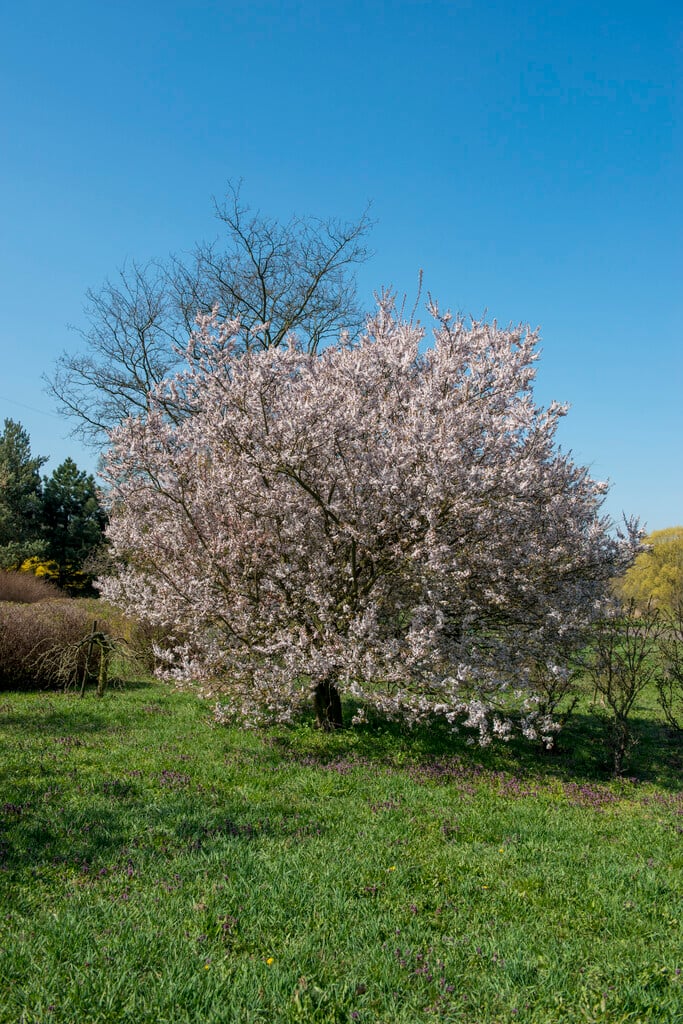Prunus cerasifera 'Hessei' (v)
cherry plum 'Hessei'
A small, bushy deciduous tree suitable for smaller gardens reaching around 2m in height and spread after 20 years. The young pale green leaves gradually turn bronze-purple and irregularly edged creamy white to yellow or pink as they mature; aging to red, purple and yellow in the autumn. White flowers in spring
Size
Ultimate height
2.5–4 metresTime to ultimate height
20–50 yearsUltimate spread
2.5–4 metresGrowing conditions
Moisture
Moist but well–drained, Well–drainedpH
Acid, Alkaline, NeutralColour & scent
| Stem | Flower | Foliage | Fruit | |
| Spring | White | Green | ||
|---|---|---|---|---|
| Summer | Bronze Purple Orange | |||
| Autumn | ||||
| Winter |
Position
- Full sun
Aspect
South–facing or West–facing or East–facing
Exposure
Exposed or Sheltered Hardiness
H6Botanical details
- Family
- Rosaceae
- Native to GB / Ireland
- No
- Foliage
- Deciduous
- Habit
- Bushy
- Genus
Prunus can be deciduous or evergreen trees or shrubs with showy flowers in spring, and often good autumn foliage colour. Some have edible fruit in autumn, and a few species have ornamental bark
- Name status
Accepted
How to grow
Cultivation
Grow in moderately fertile soil that is not prone to staying wet, and in full sun
Propagation
Propagate by chip budding or grafting, although softwood cuttings in early summer with bottom heat can be successful
Suggested planting locations and garden types
- City and courtyard gardens
- Cottage and informal garden
- Wildlife gardens
Pruning
Pruning group 1. Prune in mid-summer. If desired, you can trim last year’s growth after flowering in spring
Pests
May be susceptible to plum aphid and winter moth caterpillar
Diseases
May be susceptible to peach leaf curl, silver leaf, bacterial canker, blossom wilt and honey fungus
Get involved
The Royal Horticultural Society is the UK’s leading gardening charity. We aim to enrich everyone’s life through plants, and make the UK a greener and more beautiful place.
